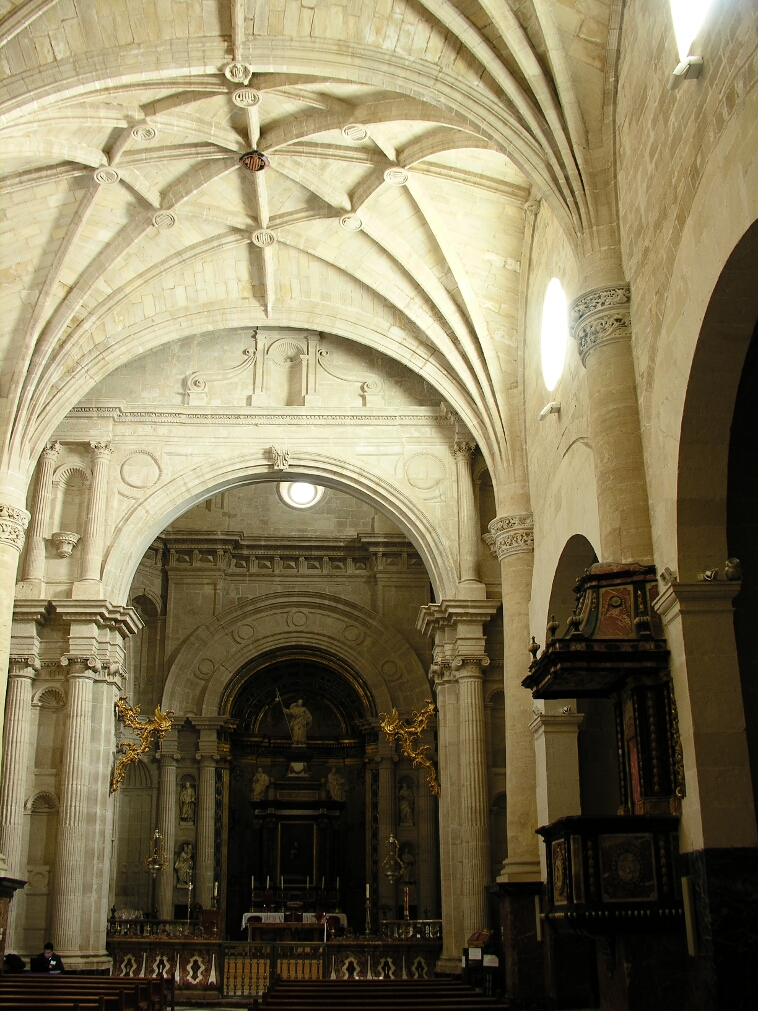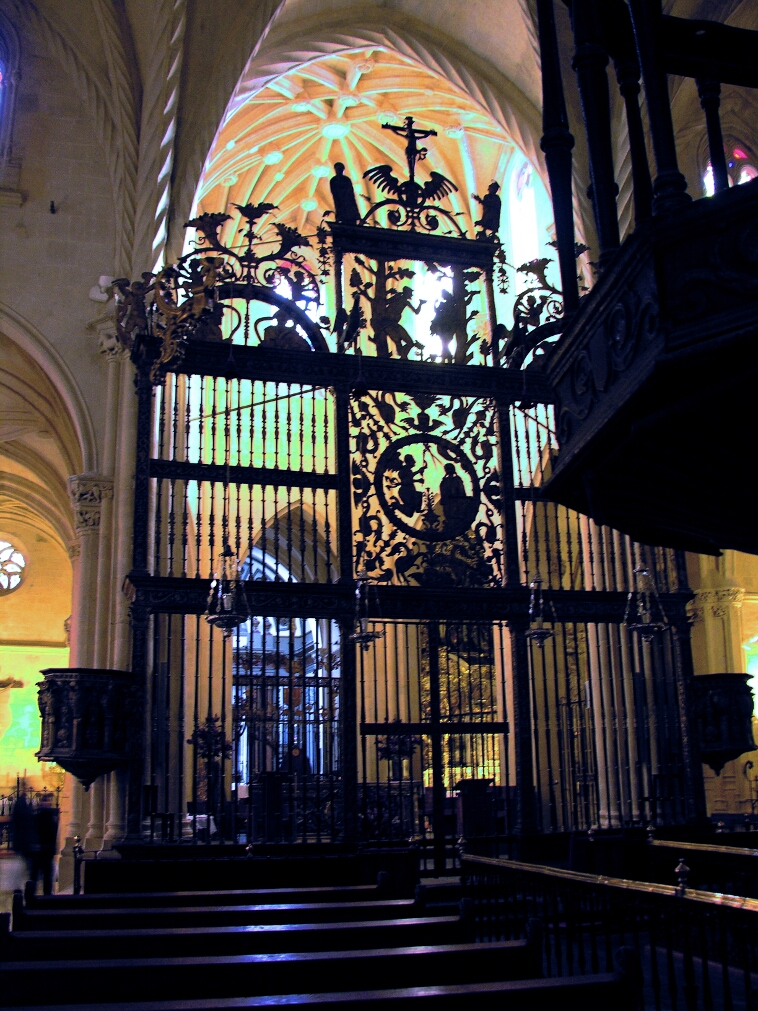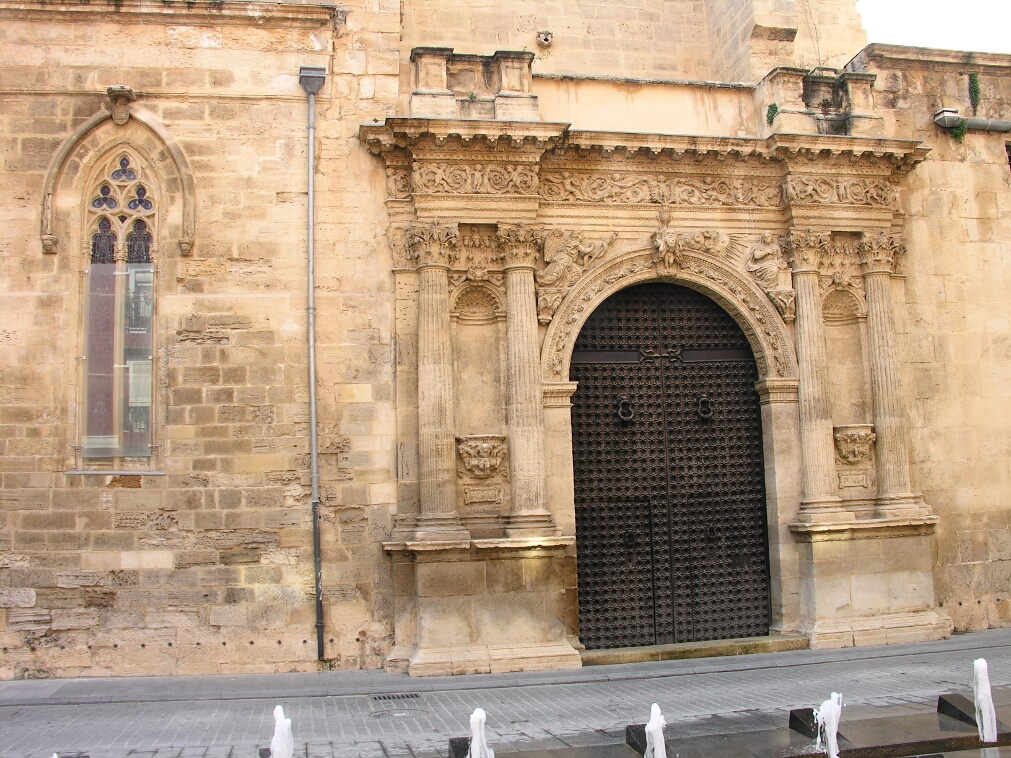Orihuela
Churches
Orihuela's churches are the southernmost examples of Catalan Gothic. To
quote from someone who knows better than I:
In the Catalan style, there is a
predominance of horizontal lines, of solid panels over empty spaces, of flat
terraces without roofs, and a preference for large bare surfaces
This is the tower of Saints Justa and Rufina, which was closed on both the
occasions we visited Orihuela. The tower is higher than any other in the
city, including that of the cathedral.

This the nave of Santiago, whose altar and apse show how the church was
"improved" with some baroque features.

Santiago has a very ornate door, and a richly decorated organ:

The isabelline other side of this doorway.

This is the chapel for the Santiago Paso

This is the Cathedral, displaying the bare surfaces.

You're not supposed to take photos inside the cathedral, I only discovered on
my second visit. All Spanish churches seem to have grillwork protecting the
altar from the laity.

Unlike Seville, the South door has saints standing on all the pedestals

The North Door is more, well, recent

Cloisters at the East end of the Cathedral

This former church is now the museum of Holy Week, and contains many floats
used in the Holy Week parades. They include groups by Salzillo, one of the
most famous sculptors in the region. No photos allowed :-(

Sacheverell Sitwell's interest in Orihuela lay not in the Gothic churches,
but in the baroque Saint Dominic's convent. This is now a school, and we had
arrived just too late to see the play or pantomime.

He says that the church has two splendid, double-storeyed, cloisters. We only
got to see one of them.

Perhaps this is the door that leads through to the second cloister.

Street Scenes
This little square has the tourist information office (one of two, if we
were to believe the tourist information supplied at the town hall, where they
had sent us off in the opposite direction), and on the right, the Palacio
del Marqués de Rafal, on the left, the Palacio del Conde de Pinohermoso, now the public library.

This is the Rafal palace

Here the font of the Palacio del Conde de Granja de Rocamora. Apparently the collection of furniture is interesting, but not open to the public.

This is all that is left of the Palacio Ruiz de Villafranca, or Inquisitor's house, of that there is no possible doubt, no probable possible shadow of doubt, no possible doubt whatever. It says so on the pedestal.

© Mike Murphy, 2010. Last modified: 2010-04-06

















